When planning the Annapurna Base Camp Trek from Kathmandu, trekkers find themselves embarking on a journey that blends stunning natural beauty with rich cultural experiences. They start with a scenic bus ride to Pokhara, where the adventure truly begins. Each day unfolds new landscapes, from lush rhododendron forests to quaint villages, all while enjoying the warmth of local hospitality in cozy lodges. Yet, before setting out, there are essential considerations that can make or break the experience. What should trekkers keep in mind to ensure a smooth and enjoyable trek?
Good To Know

- The trek begins with a scenic 7-hour bus ride from Kathmandu to Pokhara, offering picturesque views along the way.
- A private shuttle service transports trekkers from Pokhara to Nayapul, the starting point of the trek.
- Daily hikes lead through charming villages, rhododendron forests, and culminate at Annapurna Base Camp at 4,130m elevation.
- Accommodations include cozy lodges and tea houses with local cuisine, ensuring a comfortable trekking experience.
- An English-speaking guide is provided, along with all meals and emergency rescue coverage for safety and support.
Trek Overview and Itinerary
Embarking on the Annapurna Base Camp Trek offers adventurers a thrilling journey through some of Nepal’s most breathtaking landscapes.
This 11-day trek begins in Kathmandu, taking trekkers through enchanting villages, lush forests, and stunning mountain views. Starting with a scenic bus ride to Pokhara, the trek unfolds as hikers make their way to various key elevations, including Ghorepani and Chhomrong.
Each day’s trek presents unique challenges and rewards, from the exhilarating sunrise at Poon Hill to the majestic Annapurna Base Camp at 4,130 meters.
Along the route, trekkers experience the warmth of local culture and hospitality, making it a truly unforgettable experience. Proper preparation and a good trekking guide can enhance this adventure significantly.
You can also read our reviews of more tours and experiences in Kathmandu.
Transportation Options
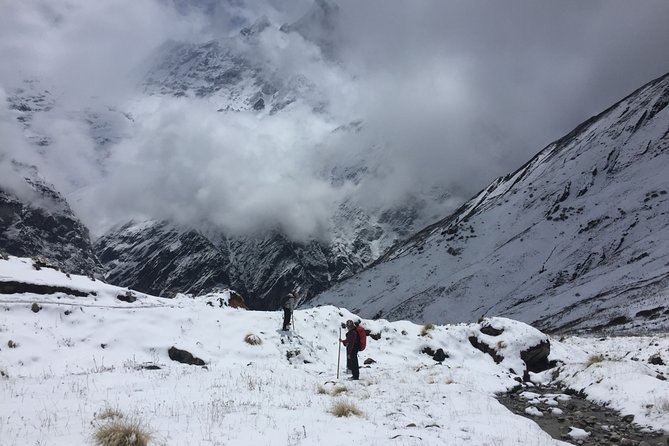
For those planning the Annapurna Base Camp Trek, understanding transportation options is key to a smooth journey.
Travelers typically start with a scenic tourist bus ride from Kathmandu to Pokhara, which takes about seven hours. It’s a great chance to soak in the rural landscapes and bustling roadside culture.
Once in Pokhara, a private shuttle service can whisk trekkers to Nayapul, the trek’s starting point. This ride is essential for getting to the trailhead comfortably.
After the trek, a private car will transfer adventurers back to Pokhara from Nayapul, allowing them to relax and reflect on their incredible journey.
Embracing these transportation options ensures a hassle-free experience, paving the way for unforgettable memories on the trail.
Accommodation Details
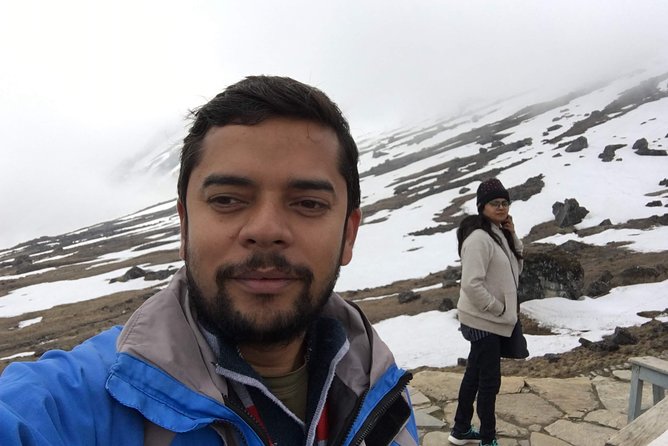
Accommodation along the Annapurna Base Camp Trek strikes a balance between comfort and authenticity, offering trekkers a chance to enjoy local culture.
Lodges and tea houses provide cozy settings, while also showcasing the warm hospitality of the Nepalese people.
Here’s what trekkers can expect:
-
Basic Amenities: Rooms come with simple furnishings, often shared bathrooms.
-
Local Cuisine: Meals feature traditional dishes, allowing guests to savor local flavors.
-
Stunning Views: Many accommodations boast breathtaking mountain vistas right from the doorstep.
-
Community Vibe: Staying in these lodges fosters a sense of camaraderie among trekkers and locals alike.
This unique lodging experience enhances the trek, merging adventure with cultural appreciation.
Daily Trek Itinerary
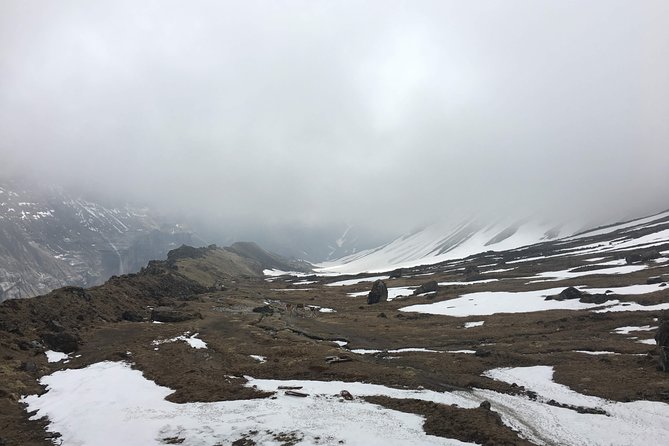
Trekkers are in for an adventure-packed itinerary as they make their way to Annapurna Base Camp. Starting with a scenic bus ride from Kathmandu to Pokhara, the journey kicks off with excitement.
Day hikes lead them through picturesque villages, lush rhododendron forests, and breathtaking mountain views. They’ll tackle challenges like ascending to Ghorepani for a stunning sunrise at Poon Hill and navigating steep trails toward Chhomrong and Dovan.
Each day brings new sights, with cozy lodges awaiting them at night. On the final stretch to ABC, trekkers relish the majestic Annapurna range surrounding them.
The trek culminates with a refreshing dip at Jhinu Hot Springs, a perfect way to unwind after this unforgettable journey.
Inclusions of the Trek
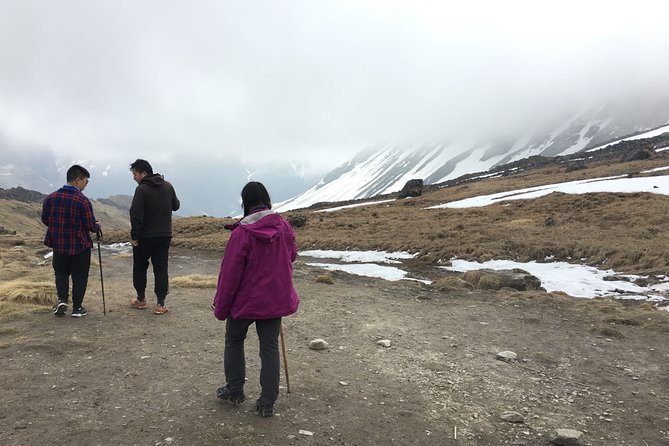
What makes the Annapurna Base Camp trek truly enriching? It’s not just the breathtaking scenery; it’s also the thoughtful inclusions that enhance the experience.
Here’s what trekkers can expect:
- An English-speaking trekking guide, ensuring smooth communication and local insights.
- All meals covered, so you can savor authentic Nepali cuisine without worry.
- Emergency rescue costs included, providing peace of mind during the trek.
- Confirmation upon booking, so you can plan your adventure confidently.
These inclusions reflect a commitment to safety, comfort, and an authentic cultural experience.
Trekkers can embrace the journey fully, knowing that they’re supported every step of the way while exploring the majestic Annapurna region.
Exclusions to Consider
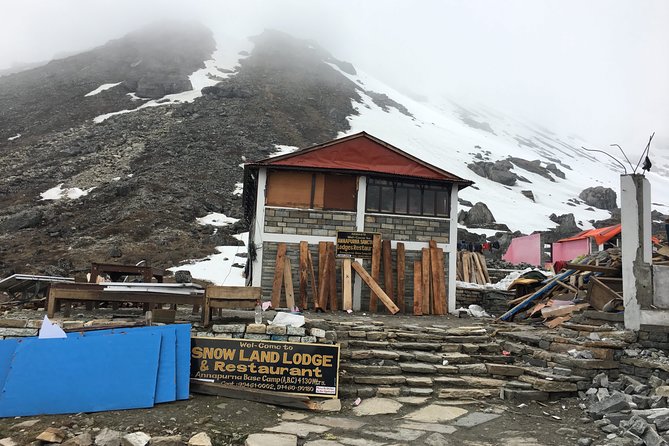
Often overlooked, the exclusions in the Annapurna Base Camp trek can significantly impact the overall experience, so it’s essential to be aware of them.
Travelers should note that admission tickets for specific activities aren’t included, which might surprise some. Plus, while tipping your guide and porters is optional, it’s a common practice that shows appreciation for their hard work.
It’s also important to remember that this trek isn’t wheelchair accessible and mightn’t suit those with serious medical conditions.
Being prepared for these exclusions ensures trekkers can plan accordingly, budget wisely, and enjoy the journey to its fullest.
After all, understanding what’s not covered can make all the difference in creating a memorable adventure.
Reviews and Experiences
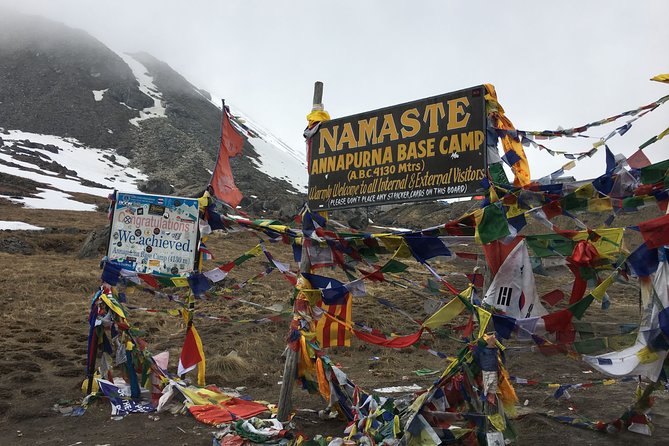
Drawing on the experiences of previous adventurers, the reviews for the Annapurna Base Camp trek reflect a largely positive sentiment.
Travelers rave about several key aspects of their journey:
- Memorable journey with breathtaking views.
- Excellent guides who enhance the experience.
- Smooth arrangements that reduce stress.
- Strong recommendations for all to experience Annapurna’s beauty.
Many trekkers appreciate the cultural insights offered by local guides, enriching their understanding of the region.
They often emphasize the thrill of reaching Annapurna Base Camp, coupled with the warmth of the local hospitality.
Preparation Tips for Trekking
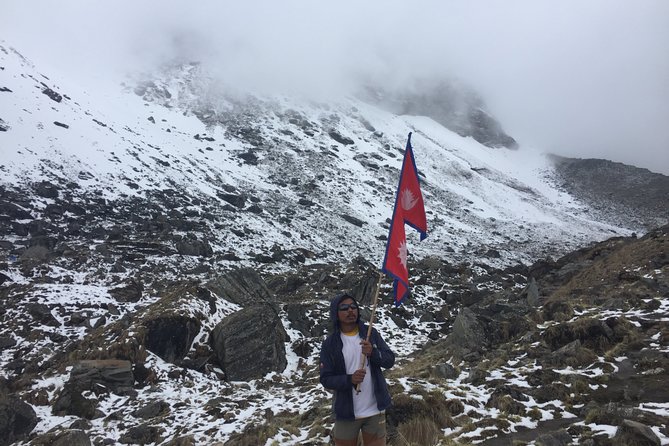
For trekkers eager to experience the beauty of Annapurna Base Camp, proper preparation can make all the difference.
They should start by investing in quality trekking gear, including sturdy boots, breathable clothing, and a reliable backpack. Staying hydrated is crucial, so carrying a reusable water bottle and purification tablets is a smart move.
Trekkers must also acclimatize properly by taking it slow and listening to their bodies. It’s wise to pack snacks for energy boosts and familiarize themselves with local customs—like greeting locals with a friendly "Namaste."
Lastly, having a basic understanding of Nepali culture can enhance the trekking experience, making it not just a physical journey but a cultural one as well.
Frequently Asked Questions
What Is the Best Time to Trek to Annapurna Base Camp?
The best time to trek is during spring or autumn. During these months, the weather’s stable, the views are stunning, and the trails aren’t overcrowded, allowing trekkers to truly enjoy the magnificent landscapes.
How Difficult Is the Annapurna Base Camp Trek?
The Annapurna Base Camp trek’s challenging, but manageable for most. It involves steep ascents, altitude changes, and varying terrain. Proper preparation, physical fitness, and acclimatization ensure trekkers can enjoy the stunning scenery without overwhelming difficulty.
Are Permits Required for the Annapurna Base Camp Trek?
For the trek, permits are essential. They ensure safety and conservation. Travelers usually need the Annapurna Conservation Area Permit and the Trekkers’ Information Management System card. It’s best to acquire them before the journey begins.
What Should I Pack for the Annapurna Trek?
For the trek, she recommends packing sturdy hiking boots, layered clothing, a warm jacket, a sleeping bag, trekking poles, a first aid kit, water purification tablets, snacks, and a good camera for stunning views.
Is There Mobile Network Coverage Along the Trekking Route?
Yes, there’s mobile network coverage along most trekking routes. However, signal strength varies. Locals often suggest using a local SIM card for better connectivity. It’s wise to inform family before heading out, ensuring peace of mind.
The Sum Up
To sum it up, the Annapurna Base Camp Trek from Kathmandu isn’t just a journey through stunning landscapes; it’s an immersive experience into the heart of Nepali culture. With its breathtaking views, cozy lodges, and warm hospitality, trekkers leave with memories that last a lifetime. So, lace up those hiking boots, pack wisely, and embrace the adventure ahead. This trek promises not just a challenge, but a chance to connect with nature and the wonderful people of Nepal. Happy trekking!
More Hiking & Trekking Tours in Kathmandu
More Tour Reviews in Kathmandu
Not for you? Here's more nearby things to do in Kathmandu we have reviewed
- From Lukla: Everest Base Camp (EBC) 10-Day Trek
- Kathmandu : Everest Mountain Flight – with Private Transfers
- Full Day : Kathmandu Sightseeing By Bus Day Trip
- Kathmandu: 7 UNESCO World Heritage Sites Day Tour
- Kathmandu: 8-Day Langtang Valley Trek with Transfers
- Thamel Rickshaw Tour
- Everest View Motorbike Tour- 6 Days
- Kathmandu: Top 4 UNESCO Sites Private/Group Tour with Lunch
- From Oceans to Mountains-9 Days (Nepal Guided Tour)
- From Kathmandu: Everest Base Camp Helicopter Tour landings
- Kathmandu: Food and Drink Walking Tour
- Life and spirituality tour of Kathmandu
